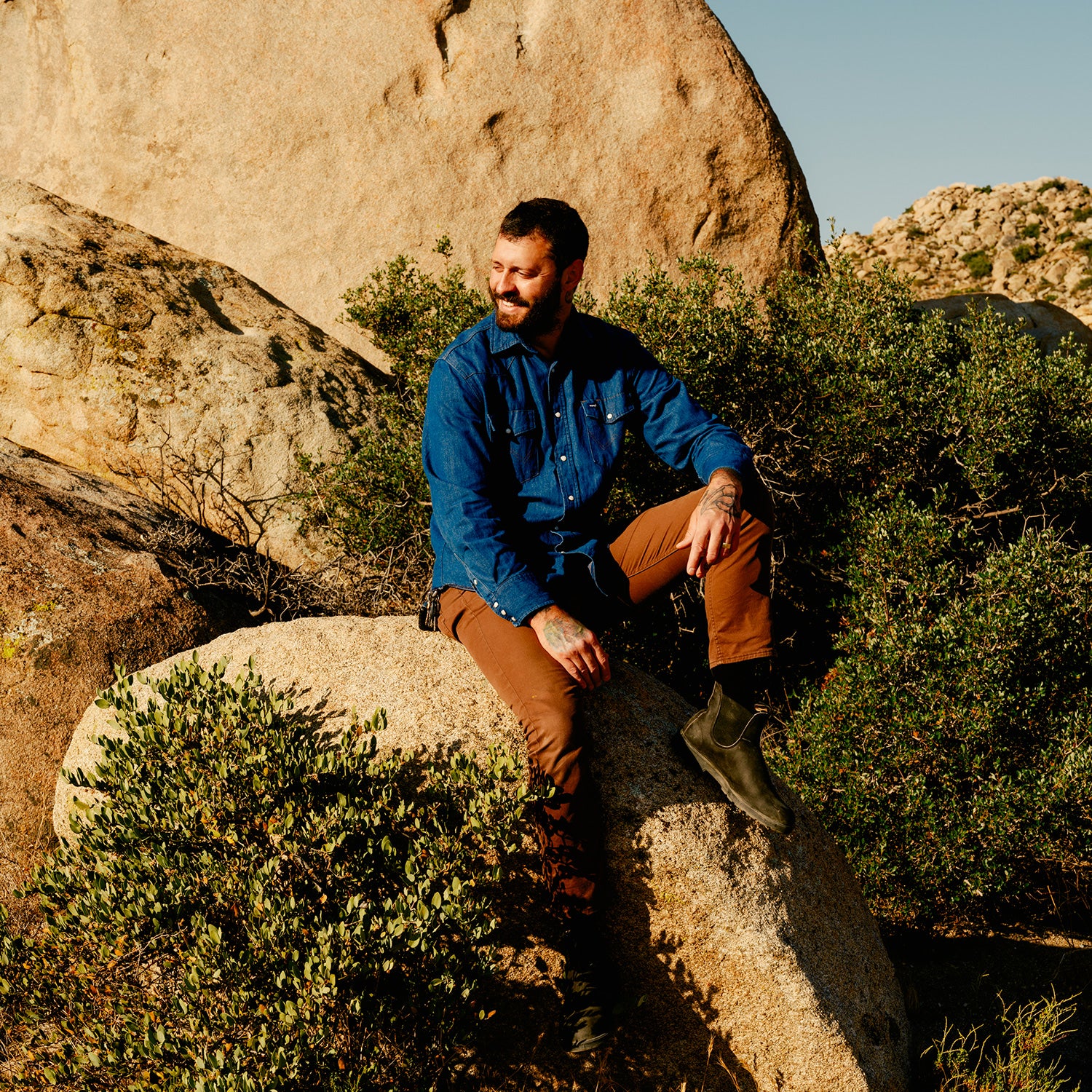“Scarcity fosters creativity,” said chef Aaron Lopez as he placed a small woven basket on my plate. He removed the lid to reveal two amaranth-leaf-topped squares that looked like artisanal chocolates. I lifted one and took a bite. The crème-brûlée-like shell shattered, releasing a sweet, fibrous, squash-filled interior laced with subtle heat.
It was late June and Lopez, 38, had invited me to his hometown, the inland Southern California city of El Centro, to preview the menu of his ambitious new restaurant, , which pays homage to the deserts of the American Southwest.
The freshly limewashed walls of the dining room were decorated with tumbleweeds gathered from his mom’s backyard and lined with cacti growing in clay pots. In the kitchen, his fridge and pantry were stocked with esoteric ingredients: a cactus glaze, cold pickled desert mallow shrub, prickly pear sambal, bee pollen shoyu, mesquite sap.
Lopez is on a mission to reimagine forgotten desert foods and ignite a sense of pride and possibility around a cuisine largely defined by chiles. Those bite-size squash snacks were created by borrowing from the Indigenous technique of nixtamalization. Traditionally, the process involves steeping and cooking corn in an alkaline solution, which makes it easier to grind into masa for tortillas. Lopez applies a similar method to this dish, soaking the mixture in the solution for two days before cooking it in agave syrup. He then shapes it into squares that are lightly fried to create a paper-thin, sugary crust, and then tops the whole thing with a sticky, fudge-like sauce made from fermented Hatch chiles and squash-seed shio koji, a Japanese marinade. The result was a perfect combination of sweet and savory.
“What drew me to cooking wasn’t a desire to nourish people,” Lopez told me over kombucha he ages in Sonoran clay pots. “I was fascinated with manipulating ingredients, turning something unexpected or unappetizing into something delicious.”
Before he embarked on a career in the kitchen, he was a sculptor and played bass in a punk band. Perhaps it takes the eyes of an artist to see a landscape of sun-scorched earth, spiky plants, petrified forests, and stinging critters as bountiful.
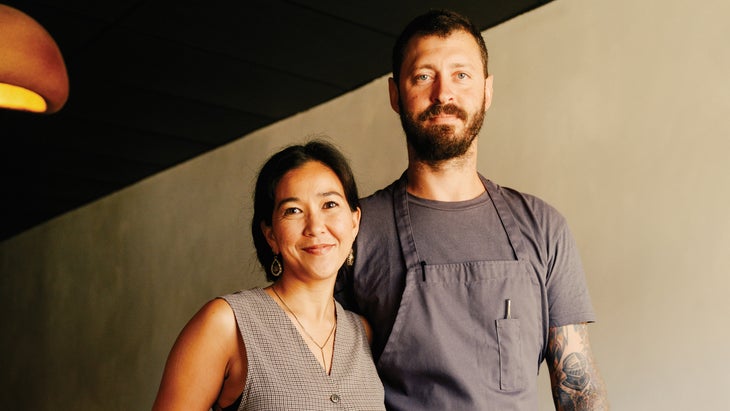
Since leasing the 43-seat restaurant space in January, Lopez and his wife, June Chee, have been hiking, foraging, and camping across the Southwest, including Joshua Tree National Park, 95 miles north. On his journey, Lopez has learned how Native people thrived in these harsh landscapes, relying on drought- and heat-tolerant crops such as chia, with its fiber-rich seeds, and tepary beans, small brown legumes with a chestnut flavor. “I bring foraging guides on what the Pueblo ate and a point-and-shoot camera, and we pull into secluded areas, pluck some ingredients to taste, and scribble field notes,” he said.
The desert is often a punishing place to harvest from. “It can feel like you’re foraging on the sun,” said Lopez. In summer, it’s not unusual for the couple to head out as early as 3:30 in the morning to beat the heat. They bring along their dogs, Lola and Jupiter, to warn of rattlesnakes and chase away tarantulas. Thick gloves are essential; Lopez estimates that he owns two dozen pairs. “I’m constantly shopping for ones that won’t puncture when I’m de-thorning things like prickly pear,” he said. “I’ve almost become immune to the cuts and stab wounds.”
Lopez never imagined he’d return home. As a teenager, he didn’t see a future in El Centro, a gritty city just over two hours east of San Diego in California’s Imperial Valley and 15 miles north of the Mexican border town of Mexicali. “I ran away from the desert as soon as I could,” he said. After graduating from Le Cordon Bleu culinary school in Los Angeles in 2012, he spent four years cutting his teeth at some of the city’s top restaurants, notably the Michelin-starred Orsa and Winston, where he helped craft the 25-course tasting menu nightly. He then decamped to Honolulu for six years and made a name for himself pushing flavor boundaries at the now shuttered Heiho House, a high-end gastropub.
But it was during his time in the tropics that Lopez started to feel the tug of the desert. “I’d come back to visit and look at the landscape with a different perspective,” he said. On these trips, he’d speak with foragers and members of local Indigenous communities, and those conversations turned him in a new direction. “I realized my heart was in the desert. I want to show the culinary community that our products can compete with those grown in a more hospitable climate.”
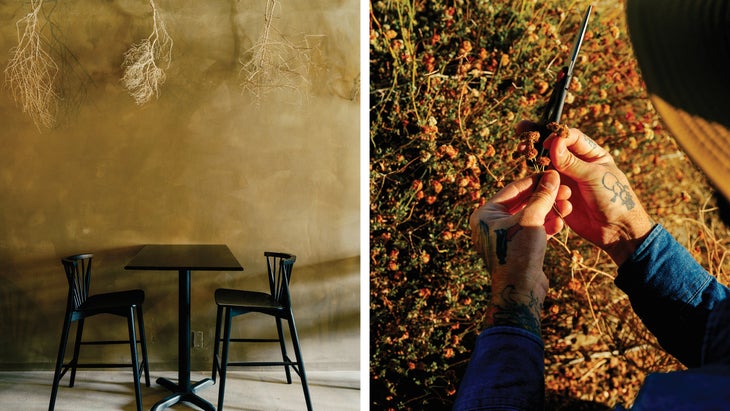
Lopez isn’t the only one exploring the potential of resilient desert flora as ingredients. Scientists think that wild desert plants, such as nitrogen-fixing tree legumes and water-efficient succulents, could be critical to sustainable farming in a hotter, more arid world. Ahead of my trip to Ursa, I called Erin Riordan, a conservation research scientist at the Arizona-Sonora Desert Museum outside Tucson. She told me that many crops grown in the nation’s deserts—wheat and barley, to name two—aren’t naturally designed to survive in xeric climates, because they didn’t originate there. As weather becomes more extreme, such crops will require more water, chemicals, and electricity to grow.
This is of particular concern in Imperial County, which is the state’s driest and only receives two to three inches of rain each year. The county is allocated the single largest share of water from the Colorado River. But that waterway continues to dry up, forcing the valley’s 400-some farmers to drastically reduce their usage for crops like broccoli, lettuce, and wheat.
In 2020, Riordan coauthored a University of Arizona study that evaluated plants traditionally eaten by the Sonoran Desert’s Indigenous cultures, such as cacti and agaves. “These species are already adapted to arid weather, require less water and energy, and produce more reliable yields,” she told me. “They’re also rich in nutrients and antioxidants.”
Like Lopez, Riordan sees deserts not as wastelands but as laboratories for food. She’s involved in a three-year project funded by the USDA that’s working with Arizona farmers to identify hardy, desert-adapted crops, promote climate-smart farming practices, and raise consumer awareness. She believes that chefs like Lopez can help influence the appeal of these foods. “Farmers are wary of switching to desert crops, because they don’t know if they’ll be able to move the product,” she said. “We have to expand the palate of the general public to build a market.”
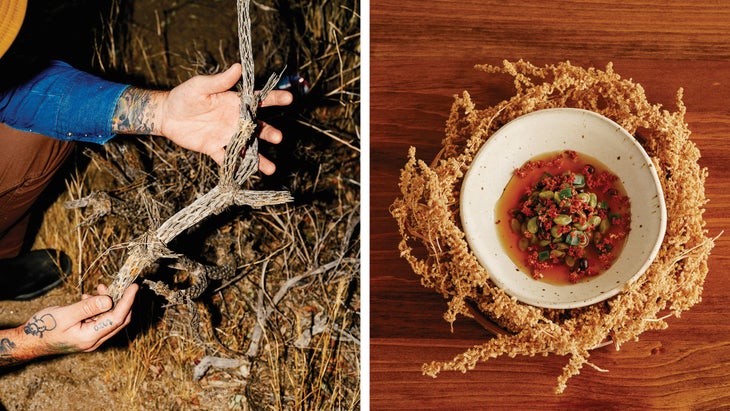
Back at Ursa, named for the constellation, Lopez excitedly showed me a space he’s building as a kind of lab dedicated to exploring the terroir of the Great Basin and the Mojave, Chihuahuan, and Sonoran Deserts. His inspirations: star Nordic chef René Redzepi’s forthcoming Copenhagen food lab and acclaimed Peruvian chef Virgilio Martinez’s research center in Lima, which employs a team of sociologists, botanists, and anthropologists to study native ingredients.
Lopez is in the process of hiring a director to research recipes and techniques used by Indigenous communities. When the lab is completed early next year, the two of them will meet with the restaurant’s network of foragers, then test ingredients and develop recipes that address culinary questions like: What happens when you dehydrate lamb’s-quarters (an edible weed)? Can you age, brine, and lightly cold-smoke barrel cactus seeds to emulate caviar?
Lopez has also sought out wisdom from Indigenous communities. On a series of R&D trips, he met with members of Arizona’s Tohono O’odham Nation, who introduced him to the prized buds of the cholla cactus, which bloom each spring. Lopez cooks the buds sous vide in a mushroom brine, dries them, and then shaves them like truffles to add an earthy punch to dishes.
Ramona Button, the proprietor of Ramona Farms on the Gila River Indian Reservation in Arizona, has become Lopez’s fixer for a finely stone-ground, cob-roasted Pima corn known as ����’i������, a dying ingredient he hopes to revitalize. For my meal, he turned it into comforting, nutty grits, topped with sour corn, corn pudding, and fall-off-your-fork corned antelope, his twist on corned beef.
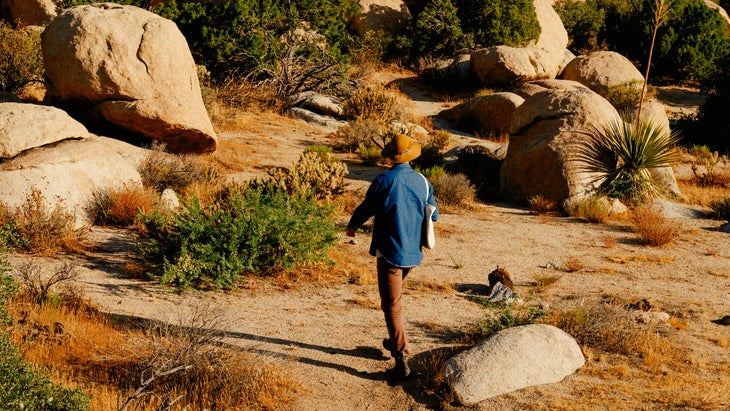
Lopez has adopted the zero-waste mentality long embraced by Native communities, too. He steeps the pods of the ironwood tree, for example, to make tea, and he turns scraps of wild boar into an umami-rich fermented garum, a riff on fish sauce. My favorite example of whole-ingredient cooking was a flan-like dessert crafted from all four parts of mesquite, a food so important to the Tohono O’odham that they once had a lunar-calendar month dedicated to it.
My meal complete, we walked outside to Main Street, where the temperature had soared to a withering 114 degrees. Lopez wanted to show me downtown, although, he admitted, “There isn’t much to see.” (The man at the rental-car counter in San Diego concurred. When I told him I was driving to El Centro, he incredulously asked, “Why?”)
I asked Lopez if he thought his hometown—where one-fifth of the population lives in poverty—is ready for a fine-dining concept. He scratched his scraggly brown beard as his pale blue eyes gazed toward a dilapidated storefront. “We have to be accessible for the locals to trust us,” he replied, and acknowledged that he’s abandoned his original tasting-menu concept. Instead, the restaurant offers a menu of 15 sharable items priced between $6 and $22 per dish, served to a funky soundtrack of disco, hip-hop, and soul.
“Do I have dreams of Michelin coming to our town one day? Sure,” he admitted. “But I care more about making our community—and all desert people—proud of the foods that shape our identity. That’s how I define success. And like most things in the desert, you just need to work a little harder for it.”


